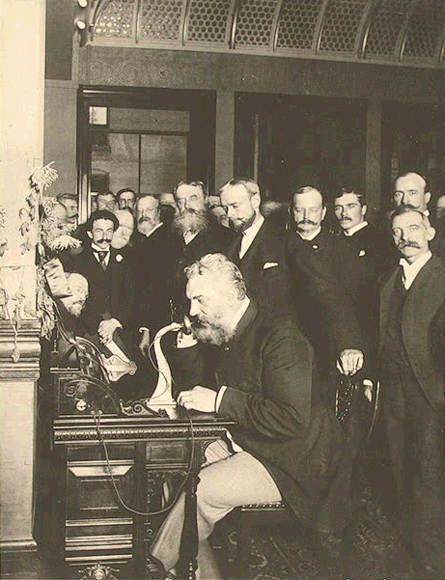
A Voice From the Past
If you’ve ever wondered what the inventor of the telephone might have sounded like from the other end of a landline, you may finally have your answer: researchers have discovered and managed to restore a brief recording of Alexander Graham Bell’s own voice.
Famously – if controversially – credited for patenting the acoustic telegraph, Bell (01847-01922) dedicated his life to the science of creating, recording, and transmitting sound waves. He co-founded the Volta Laboratory in Washington, DC, where his team experimented with magnetic sound recording and worked on improvements to Edison’s phonograph. The Smithsonian Magazine writes:
Inside the lab, Bell and his associates bent over their pioneering audio apparatus, testing the potential of a variety of materials, including metal, wax, glass, paper, plaster, foil and cardboard, for recording sound, and then listening to what they had embedded on discs or cylinders.
The laboratory produced a considerable collection of recordings, and kept meticulous records of their proceedings. In the late 19th century, Bell donated a large amount of this to the Smithsonian Institution, where they have been carefully preserved. Sadly, however, Bell’s documentation included little information about the instruments he used to play his own recordings, and so the passing of time and evolution of technology reduced his discs to “mute artifacts.”
So when researchers at the Smithsonian discovered a piece of paper in a collection of the earliest audio recordings ever made that transcribed an 1885 recording ostensibly made by Bell, then matched that to an actual wax-on-cardboard disc sporting the initials “AGB” and the same date, April 15, 1885, they couldn’t just drop it into an old-school player and crank away. (Time)
Now, researchers at the Lawrence Berkeley National Laboratory have managed to bridge this technological divide: they have developed a way to “extract” sound from 19th century recordings. A high-resolution 3D camera allows them to create a topographical map of an audio disc without damaging its surface; a computer can then convert this map into sound waves. Using this technology, the Library of Congress brought the 1885 recording back to life, and found, indeed, a snippet of A.G. Bell’s own voice.
It is “a new invention in the service of invention,” says National Museum of American History curator Carlene Stephens. The Berkeley lab’s new disc-reading technology has succeeded in restoring a piece of its very own origins: it has revived the legacy – and the voice – of a pioneer in the science of audio transmission.
Join our newsletter for the latest in long-term thinking
Subscribe